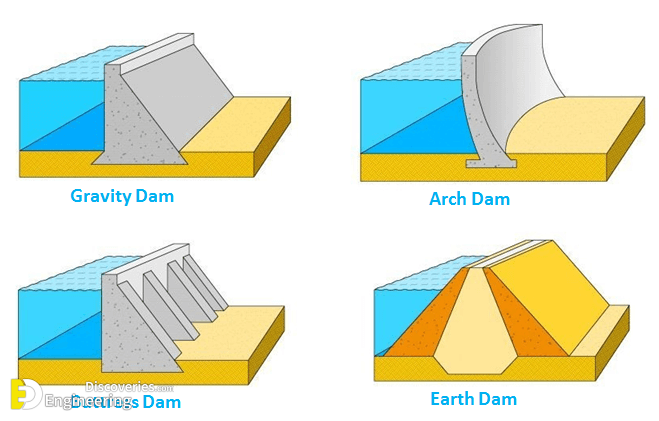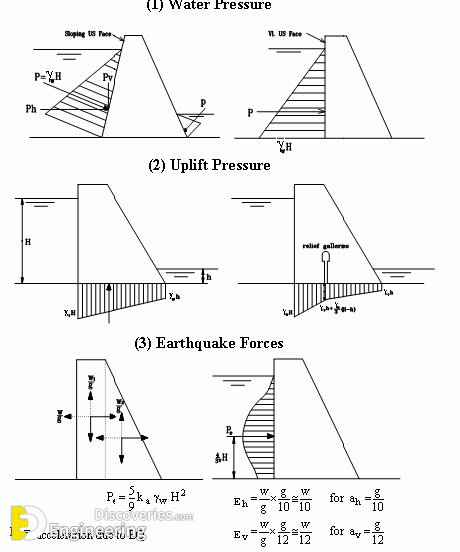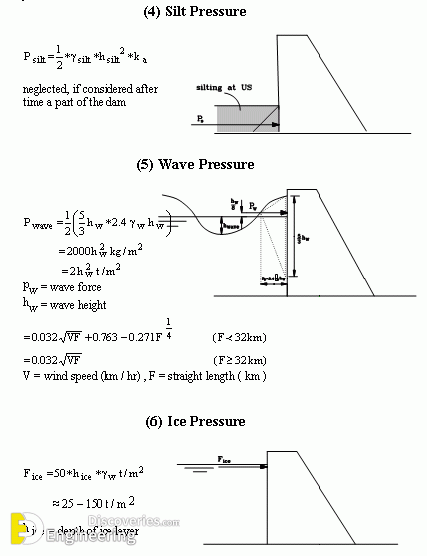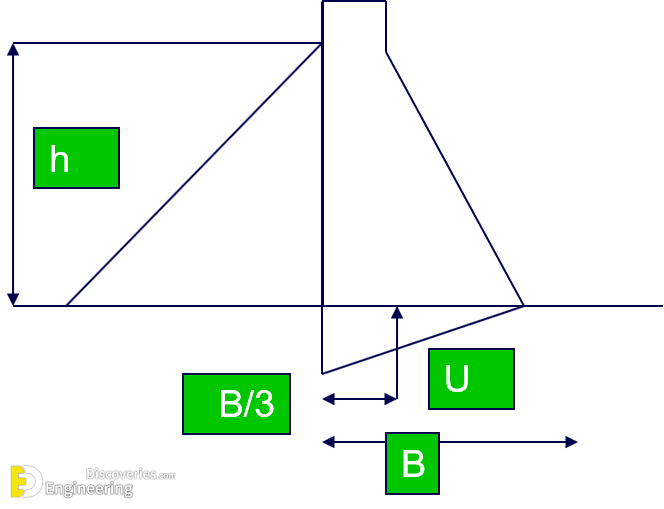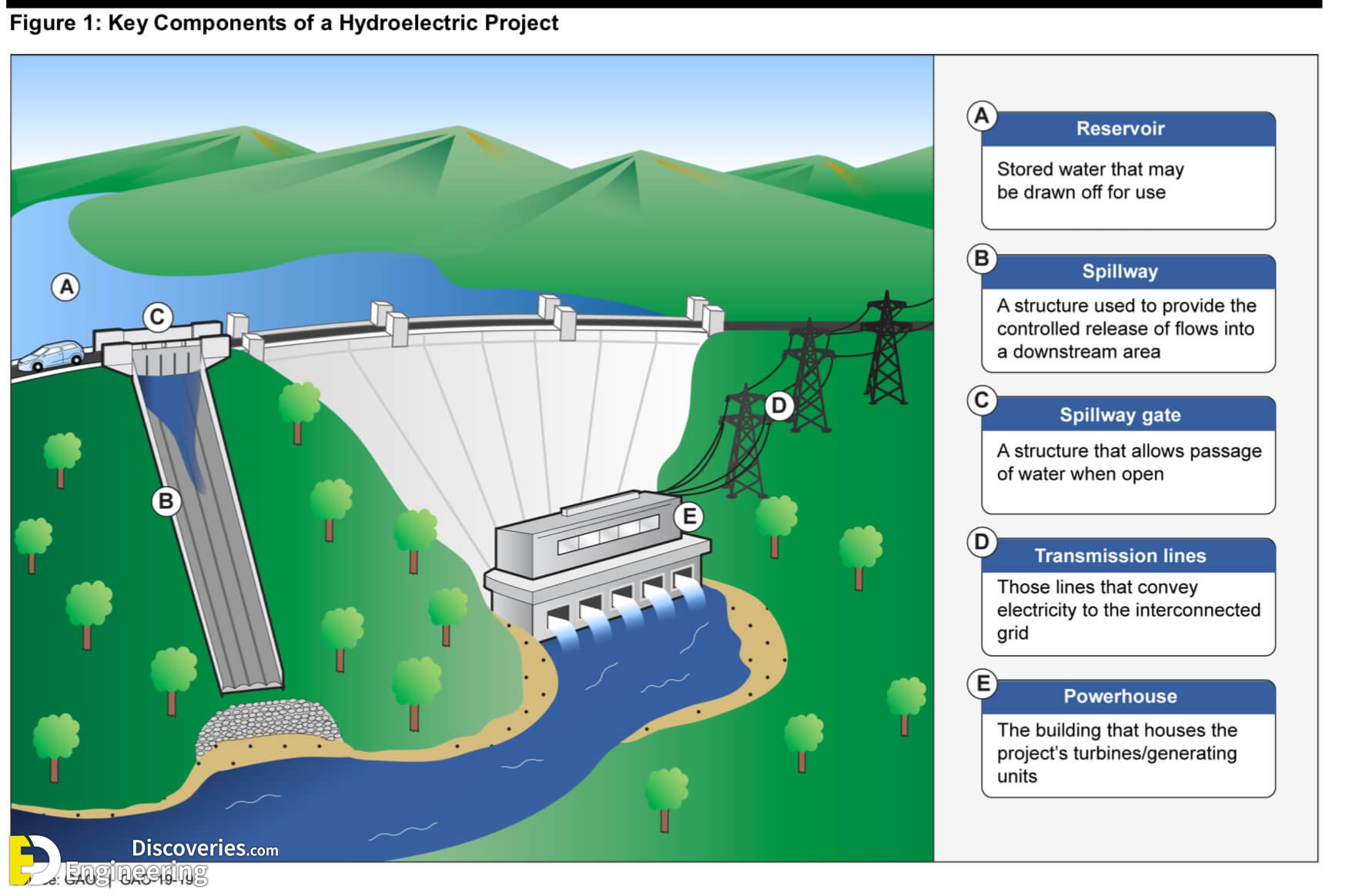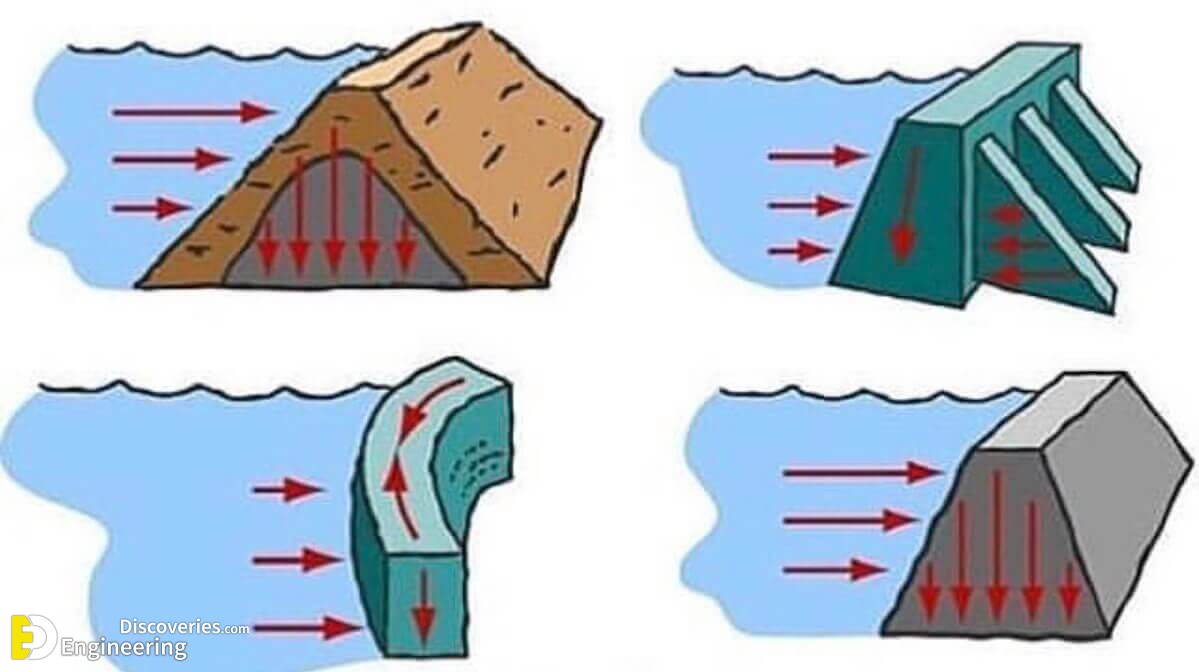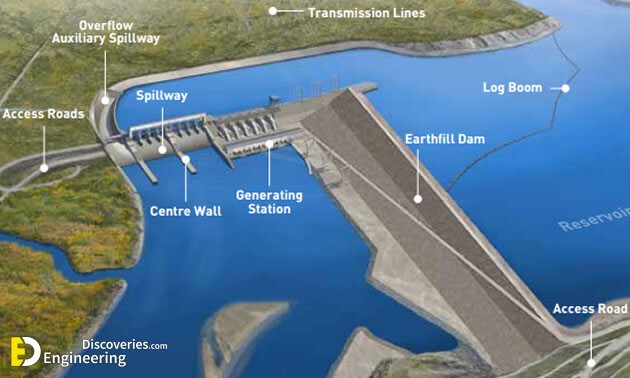To design a dam, various forces must be considered to ensure the safety of the dam. The most important forces are:
1- Weight of the dam
2- Water Pressure
3- Uplift Pressure
4- Wave pressure
5- Earthquake forces
1-Weight of dam
The weight of the dam per unit length is equal to:
W= γm*volume per unit length
Where γm is the specific weight of the dam’s material,
2- Water Pressure
Horizontal pressure by the water at the upstream and downstream(tailwater)., which is also influenced by the shape of the dam. Acts perpendicular to the surface of the dam and is calculated per unit width as follows:
Pw= ½ * γw * h²
Where γw is the specific weight of water and h is the height of water.
3- Uplift Pressure
As the head of water in the upstream increases the seepage of water through the underlying soil or through the cracks in the impounding structure and through the foundation increases. This water creates an upward pressure that reduces the self-weight of the dam which is a major stability factor. the uplift pressures on dams act as shown.
U= ½ * γw *h * B
Where B is the width of the base of the dam.
4- Wave pressure
The upper part of the dam (above the water level) is subjected to the impact of waves. The maximum wave pressure per unit width is:
Pw= 2.4 *γ * hw
Where hw is the wave height.
5- Earthquake forces
Dams are subjected to vibration during earthquakes. Vibration affects both the body of the dam and the water in the reservoir behind the dam. Vibration forces are a function of both the intensity (Rechter Scale) and its duration. The most danger effect occurs when the vibration is perpendicular to the face of the dam.
a- Body Forces
Body force acts horizontally at the centre of gravity and is calculated as:
Pem= α * W
b- Water Force
Water vibration produces a force on the dam acting horizontally
Pew= 2/3 * Ce * α * h²
Where Ce is another coefficient (0.82) and h is the height of the water
Example
Calculate the forces on the given dam if;
γm = 2.5 t/m3, γw =1 t/m3, hw = 1.5 m,
1- Weight of water
W= γm*volume per unit length
W1=2.5 * 6 * 40 = 600 t
W2=2.5 *0.5*18*30
= 675 t
2- Water Pressure
Pw= ½ * γw * h²
Pw = 0.5 * 1.0 * (33)2
= 544.5 t
3- Uplift
U= ½ * γw *h * B
U = 0.5 * 1.0 * 33 * 24
= 396 t
4- Wave Pressure
Pw= 2.4 *γ * hw
Pw = 2.4 * 1.0 * 1.5
= 3.6 t
5- Earthquake Forces
a- Body Forces
Pem= α * W
Pem1= 0.1 * 600
= 60 t
Pem2= 0.1 * 675
= 67.5 t
b- water Force
Pew= 2/3 * Ce * α * h²
Pew=(2/3)*0.82*0.1*(33)2
= 59.55 t



